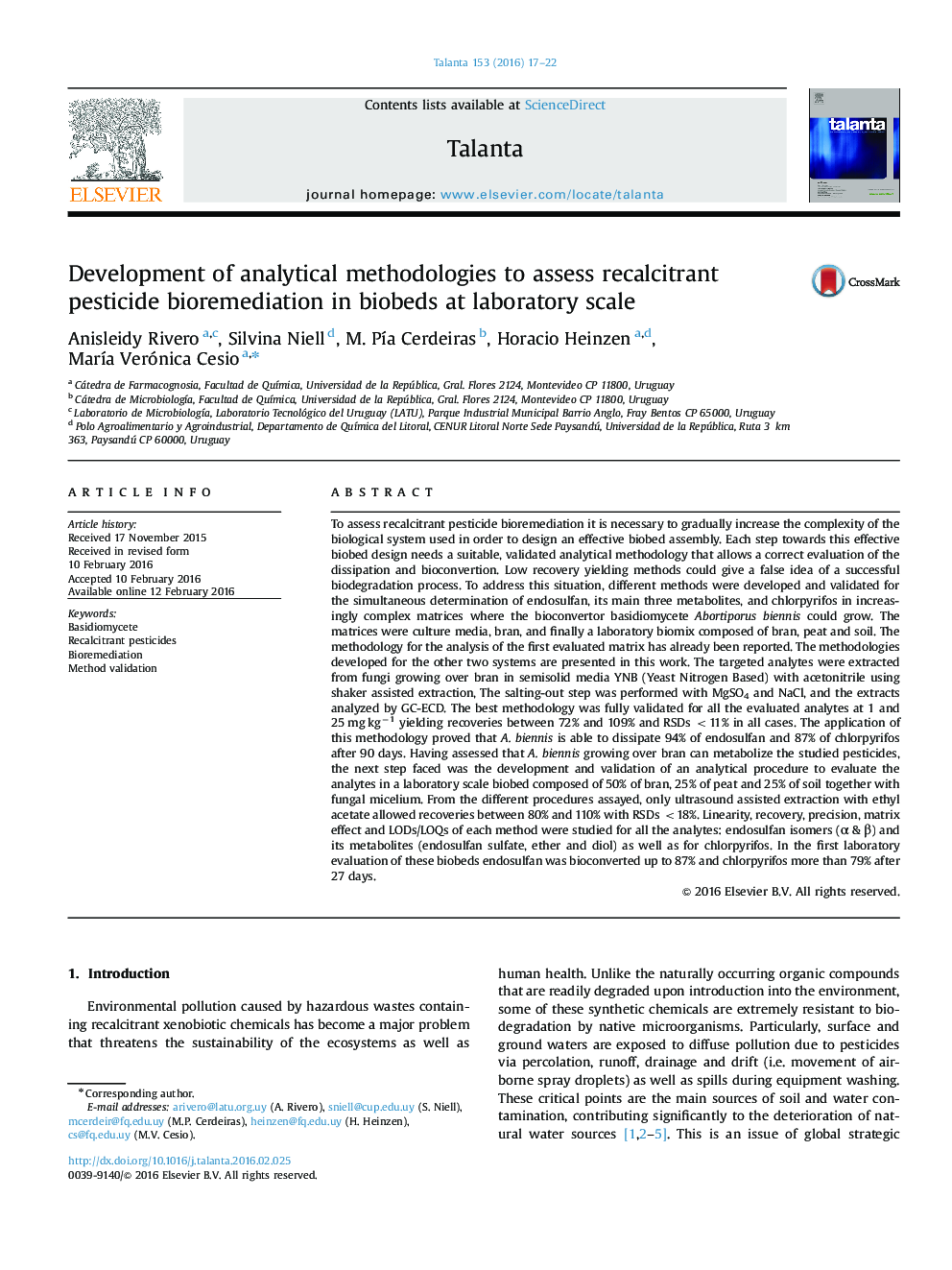| کد مقاله | کد نشریه | سال انتشار | مقاله انگلیسی | نسخه تمام متن |
|---|---|---|---|---|
| 1242551 | 1495782 | 2016 | 6 صفحه PDF | دانلود رایگان |
• Xenobiotic conversion in biobeds can only be proved with validated analytical methods.
• Cereal bran is suitable for the growth of native bioconvertor Basidiomycetes.
• Fit for purpose methodologies to assess biobeds performance were developed.
• Laboratory biobeds dissipated 79% chlorpyrifos and 80% endosulfan after 27 days.
To assess recalcitrant pesticide bioremediation it is necessary to gradually increase the complexity of the biological system used in order to design an effective biobed assembly. Each step towards this effective biobed design needs a suitable, validated analytical methodology that allows a correct evaluation of the dissipation and bioconvertion. Low recovery yielding methods could give a false idea of a successful biodegradation process. To address this situation, different methods were developed and validated for the simultaneous determination of endosulfan, its main three metabolites, and chlorpyrifos in increasingly complex matrices where the bioconvertor basidiomycete Abortiporus biennis could grow. The matrices were culture media, bran, and finally a laboratory biomix composed of bran, peat and soil. The methodology for the analysis of the first evaluated matrix has already been reported. The methodologies developed for the other two systems are presented in this work. The targeted analytes were extracted from fungi growing over bran in semisolid media YNB (Yeast Nitrogen Based) with acetonitrile using shaker assisted extraction, The salting-out step was performed with MgSO4 and NaCl, and the extracts analyzed by GC-ECD. The best methodology was fully validated for all the evaluated analytes at 1 and 25 mg kg−1 yielding recoveries between 72% and 109% and RSDs <11% in all cases. The application of this methodology proved that A. biennis is able to dissipate 94% of endosulfan and 87% of chlorpyrifos after 90 days. Having assessed that A. biennis growing over bran can metabolize the studied pesticides, the next step faced was the development and validation of an analytical procedure to evaluate the analytes in a laboratory scale biobed composed of 50% of bran, 25% of peat and 25% of soil together with fungal micelium. From the different procedures assayed, only ultrasound assisted extraction with ethyl acetate allowed recoveries between 80% and 110% with RSDs <18%. Linearity, recovery, precision, matrix effect and LODs/LOQs of each method were studied for all the analytes: endosulfan isomers (α & β) and its metabolites (endosulfan sulfate, ether and diol) as well as for chlorpyrifos. In the first laboratory evaluation of these biobeds endosulfan was bioconverted up to 87% and chlorpyrifos more than 79% after 27 days.
Figure optionsDownload as PowerPoint slide
Journal: Talanta - Volume 153, 1 June 2016, Pages 17–22
